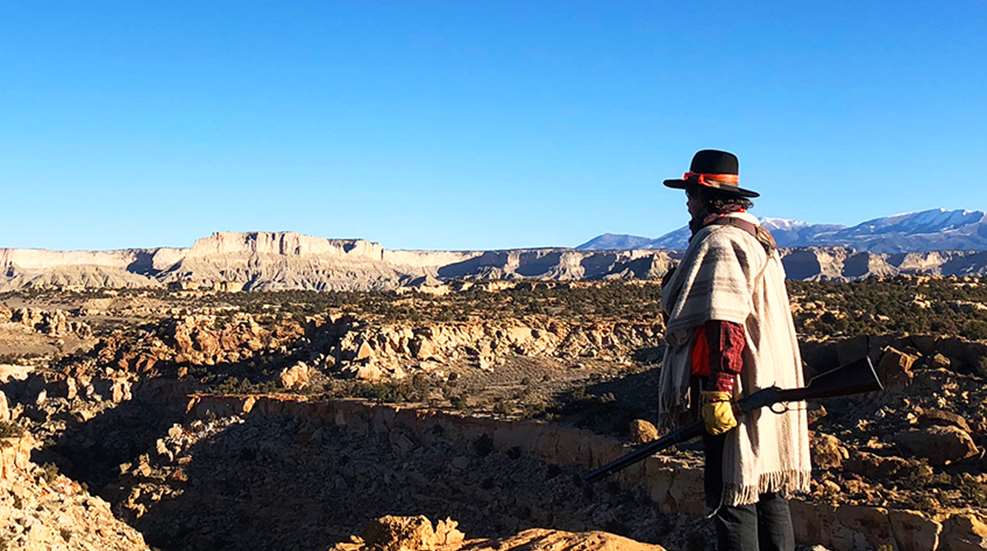
Snow fell thickly in the dusk, blowing sideways, driving hard into my whiskers and against my unprotected face. I was lost in a gloomy sub-zero world of cedar and sagebrush, visibility down to only a few feet, my only compass the mountain horse I rode. I was cold—colder than I’ve ever been before or since. Even the year I guided ten days in Montana’s Bitterroot Mountains with temperatures hovering at minus 20˚F I wasn’t this cold. My life hung in the balance; the decisions I made during the next ten minutes would determine life or death.
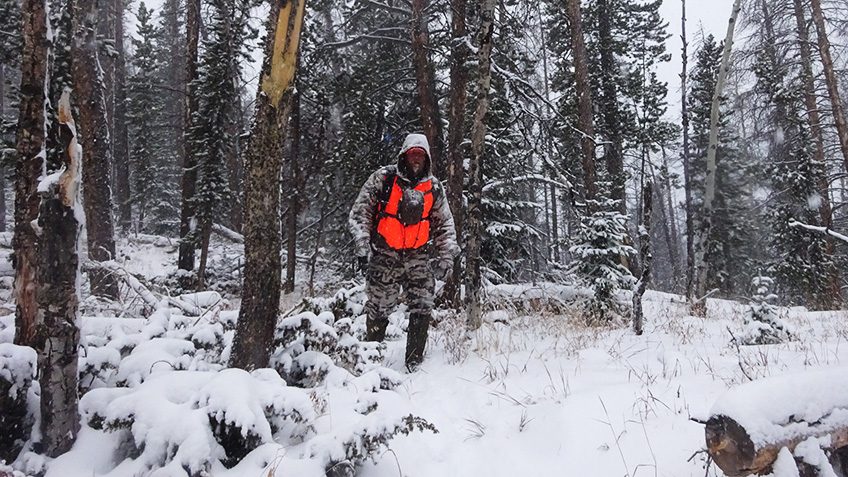
Hypothermia
The most common backcountry hazard is not a raging bear; it’s not getting lost in the dark, or being stalked by a mountain lion, or falling from a hairline cliff trail. Those things happen, but only rarely. The most common backcountry danger is simply becoming too cold. First, you get a little chilly, then you’re actually cold, but the fishing, hunting, photography, whatever, is too good to give up and you don’t take action to start a fire or perform other means of getting warm. Then you get really cold—your hands are shaking, you suddenly no longer care about the fishing, and you’re muscles are so stiff and shaking so hard that you find difficulty in striking a match. Your wits become dull, and unless you’ve got a fishing/hunting buddy who’s smarter than you are, you’ll be dead shortly. The key to surviving hypothermia is recognizing when danger threatens and taking action to prevent getting too cold. In backcountry settings, that usually means establishing shelter and a fire.
In my experience above (and yes, it really happened) I had two alternatives; I could stop, find shelter in a thick stand of pinyon and juniper trees, and build a fire, and then spend the night gathering firewood and alternately toasting one side and frosting the other next to the fire. I’d be uncomfortable and I might suffer some frostbite, but I’d survive. Or, I could ride on, trusting my horse to find the line cabin I’d been heading for when the storm struck. In this second alternative, I’d either be out of the storm and warming my feet in the glow of the cabin’s wood stove within 30 minutes, or dead within three hours.
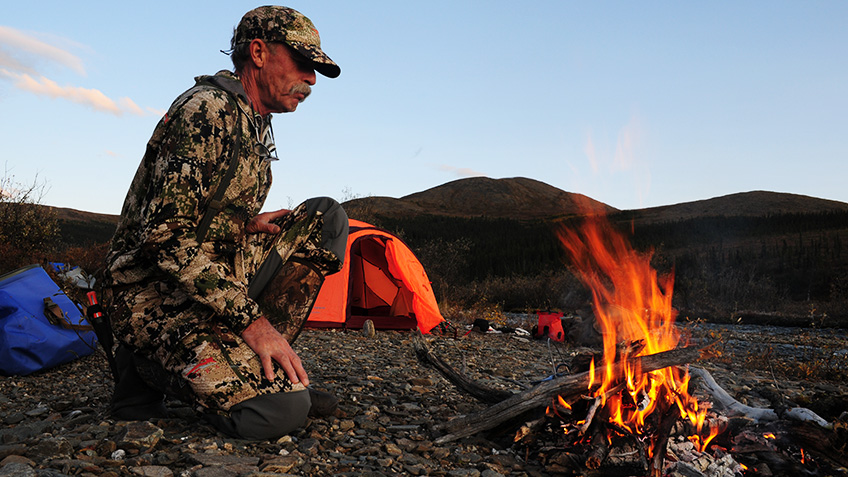
In almost every case, option one was the right choice. However, my decision in this instance was tempered by two things; first, I was riding one of the finest mountain horses I’ve ever swung a leg over, and second, I was pushing a little bunch of cattle toward the corrals and a trip off the mountain to their warmer winter range. I had a responsibility to bring them in; if I didn’t, they could get snowed in and winterkill.
I chose to trust my horse; she held true through the now pitch-dark storm, and within 30 minutes had the cattle bunched against the corral gate. My relief was intense.
The instructions for surviving nature’s biggest hazard are simple: Stay dry and stay warm. Plan and dress appropriately. If you start getting chilled, take aggressive steps to warm yourself. It’s that simple.
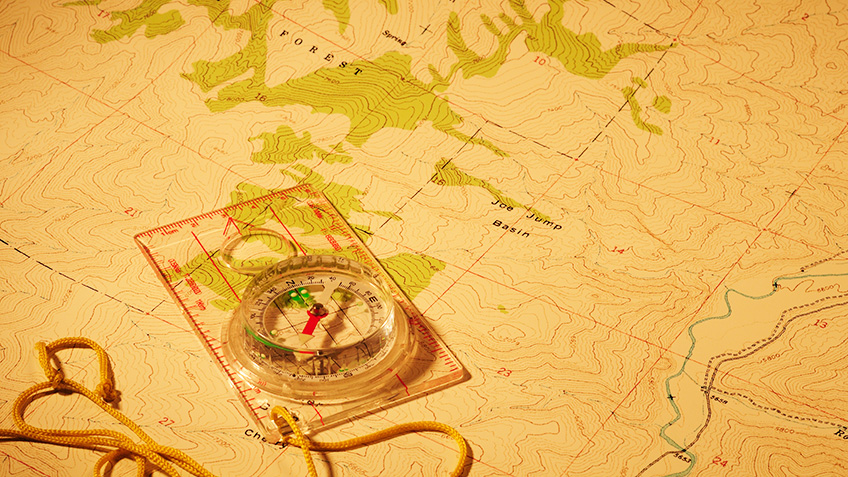
Getting Lost
Becoming disoriented or “lost” is likely next on the list of most-feared backcountry disasters. Ironically so, because in our modern world of GPS units, satellite imagery and transmitters, and cell phones, it’s easy to stay found. Still, the vast majority of people fear to travel much more than shouting distance from a road or trail.
I’ve felt lost twice, once while cowboying far from any road when I was 13 years old, the second time during that same frigid season of guiding elk hunters in the Bitterroots. The first time, some cattle showed me the trail toward home, and I was, of course, fine. That experience inspired me to pay attention whenever in the backcountry, and has benefitted me immensely. The second time, my hunters and I had tracked two bulls for about six miles through the snow. It became time to turn back for camp, and the mountains were besieged under a multi-day storm; the cloud ceiling was just overhead, and landmarks were nonexistent. Had I not possessed a compass that day, we may well have met our end, truly lost and frozen to death in some remote Montana canyon.
The keys to staying found in the backcountry are these: First and most importantly, pay attention. Look around; watch your back trail, and notice landmarks like unusually shaped peaks, trees, canyon bends and rocks. If you always pay attention, you’ll almost always know where you are.
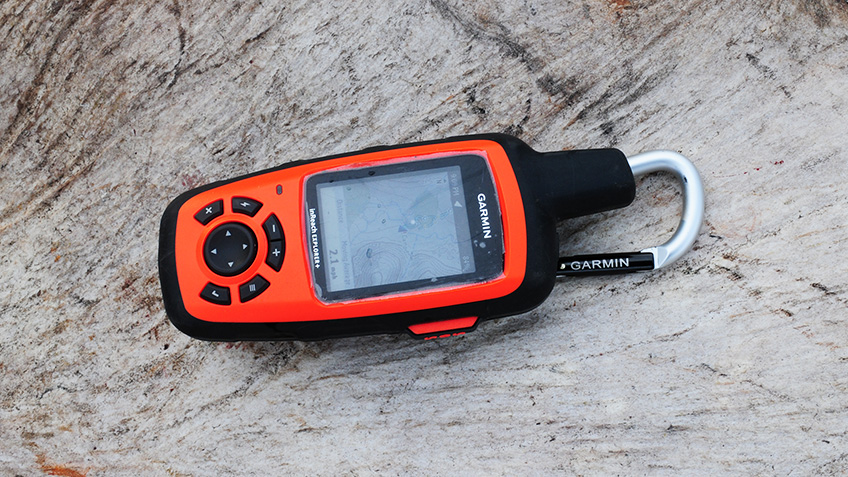
Second, carry a good GPS unit. My favorites are Garmin’s inReach series, which combine GPS, satellite communication and SOS capabilities into one high-quality unit. Use your GPS to mark waypoints, create tracks and so on, but don’t stare at the screen while traveling—if you do that, you can’t pay attention. The same goes for your phone; OnX Hunt and other mapping apps with satellite imagery are awesome, but you’re far better off (and safer) navigating with your devices in your pockets and your eyes on the hills.
Third, carry a compass and topographical maps. A simple course in basic navigation will teach you how to use them, and should the apocalypse happen and your electronic devices go belly up, you’ll still be able to navigate.
Lastly, while traveling through the backcountry, stop and look back regularly, especially if you’ll be exiting the same way you came in. That way you’ll recognize the area and never feel “lost.”
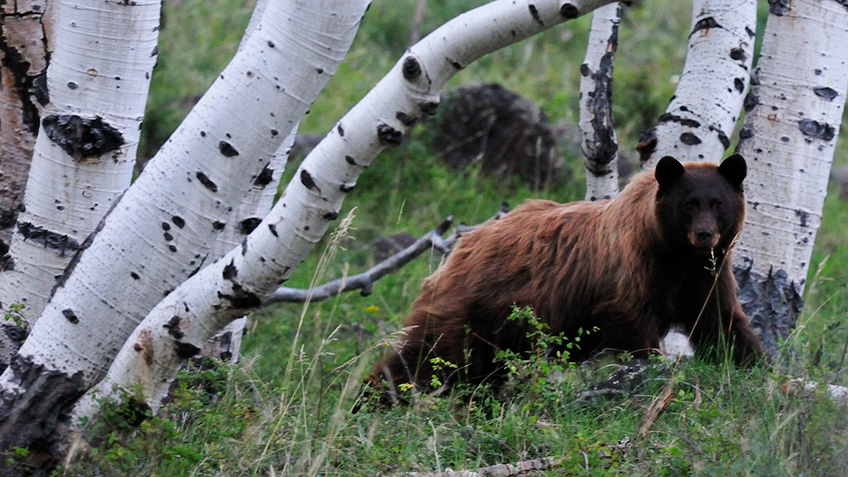
Animal Attack
Probably the most sensationalized backcountry dangers you hear about are bear or mountain lion attacks. Ironically, those are also the dangers you’re least likely to encounter, unless you’re adventuring in grizzly or brown bear country. That is an entirely different matter, and material for a different conversation. For now, let’s talk about the dangers you might encounter in much of the Lower 48’s backcountry hunting grounds. Remember, wild animal attacks are all different, and there is no one-size-fits-all answer to dealing with them. Below are some of the most-agreed-on tactics for surviving.
Black Bear: Attacks by black bears are very, very rare. However, when one does attack, the scenario is exceptionally dangerous because the bear usually intends to eat you. Your best chance for survival is to try to evade the bear (never, never run; that’ll trigger an attack response in a previously undecided bear), and if that doesn’t work, fight for your life with whatever weapon you have on hand. Shoot him, club him, stab him, burn him. Just fight.
The one exception to this strategy is if you’re convinced that the attacking bear is a mother protecting her cubs. If you’ve seen little cubs, and potentially gotten between the aggressive sow and her youngsters, then your best strategy might be to lay belly-down on the ground, try to protect your neck and head, and act totally submissive. Hold entirely still, and continue to hold still long after the sow has quit her attack and moved off. She is likely to sit down and watch you for a while, looking for movement. If she sees you move she will likely renew her attack.
Mountain Lion: If a lion attacks you, it wants to eat you for dinner. Rather than handing them the steak sauce, fight back. Try to stay on your feet, and if you don’t have a gun or bow to shoot the cat with, throw rocks and sticks, shout and posture like the biggest, baddest thing in the woods in an attempt to bluff the lion. If it persists, try to find a good club with which to beat off the attack. If the cat pulls you down, attack its eyes, head and throat with your knife, a rock, or whatever you can get your hands on. Most fatal mountain lion victims are killed instantly and by surprise. Who knows; you might even pull off a Sampson and kill the lion with your bare hands.
Snake Bites
Backcountry snake bites are really uncommon, because most folks savvy enough to hunt, fish or adventure in wilderness settings are also smart enough to not tamper with a venomous snake. And there lies your prevention tactic; don’t mess with dangerous reptiles. In areas with a lot of snake activity, you should wear snake-proof gators or boots, and sleep in a tent at night so one doesn’t crawl into your sleeping bag with you. (I have an acquaintance that has had the experience. She simply lay perfectly still while the rattler slept on her chest. It finally slithered away, leaving her with one of the best true-life survival stories of all time.
If you do happen to get bit by a snake while in a backcountry setting, try to stay calm and send an urgent message for help. (Here’s where your inReach SOS function would shine.) The venom is spread through your system via your circulation, so it’s important to keep your heart rate calm and slow, and keep the bite site lower than your heart. If you have no evacuation options and no buddies to carry you, just leave everything you don’t absolutely need and hike to the trailhead, ideally, slowly enough to keep your heart rate down.
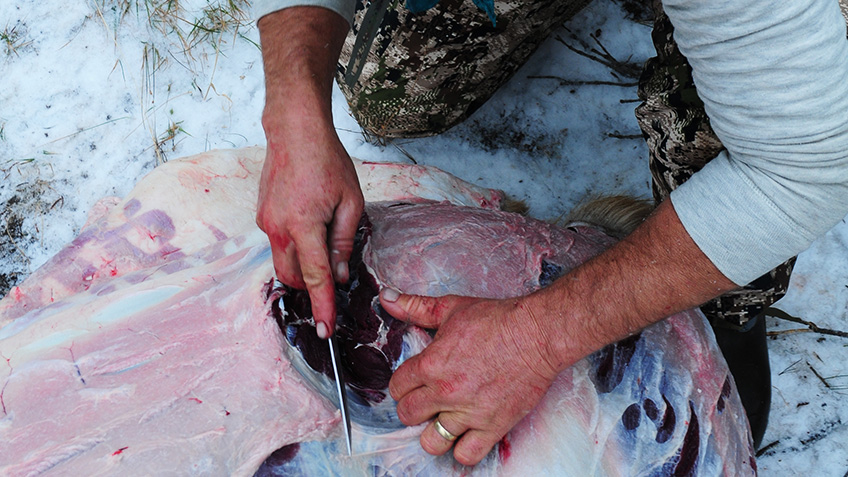
Severe Bleeding
Cuts happen everywhere, they’re just more dangerous when you’re in the wilderness—especially wounds that spout blood like a crimson rendition of Old Faithful. For that reason, you should be ultra-careful anytime you’re using a knife, axe or saw. Never use them in a hurry.
If the worst does occur, you need to evaluate the injury; is it bleeding dangerously (enough that you might die)? If so, can you stem, and eventually stop, the flow? If not, you better hit that SOS button pronto.
If you’re able to stem the blood flow (which is most of the time), then assess if you’ll be able to make it out to medical care without a medevac. If you’re capable of hiking or riding out, then no worries; take your time and care for your wound (or your buddy’s, if someone else is the victim). Once you’ve got the bleeding stopped and the wound dressed, you can hike out and get professional care. If you can’t get out without help, send a non-urgent message for assistance.
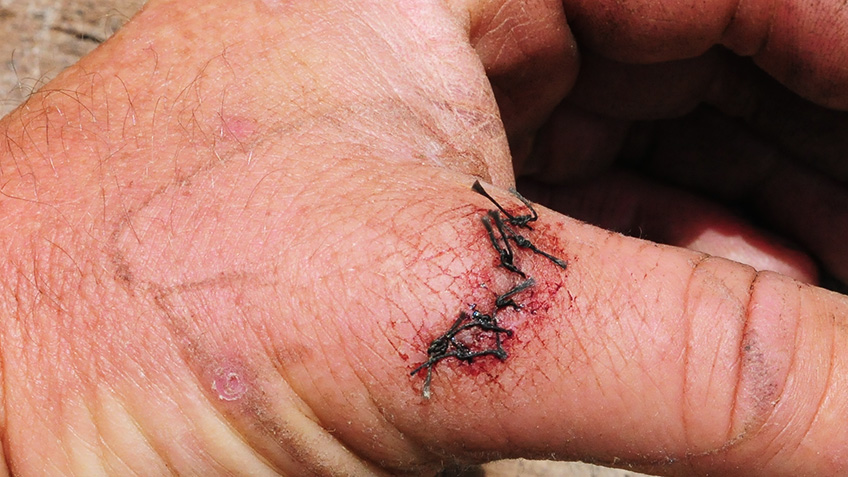
My backcountry first-aid kit is supremely basic, due to my desire to keep things lightweight. I don’t carry gauze or bandages, because I know I have a large silk neckerchief and some clean garments that will suffice in an emergency. I do carry a lightweight quick-clot type bandage that I can stuff into a wound and will stop almost any bleeding, and I sometimes carry a suture kit. You can find a simple suture kit online, and learn to stitch at the same source. Practice sewing thin orange peels—it’s not the same, but at least you’ll be able to tie a knot when the pressure is on and everything is slippery with blood. Sewing on yourself or a member of your party is, of course, only advisable under rather dire circumstances.
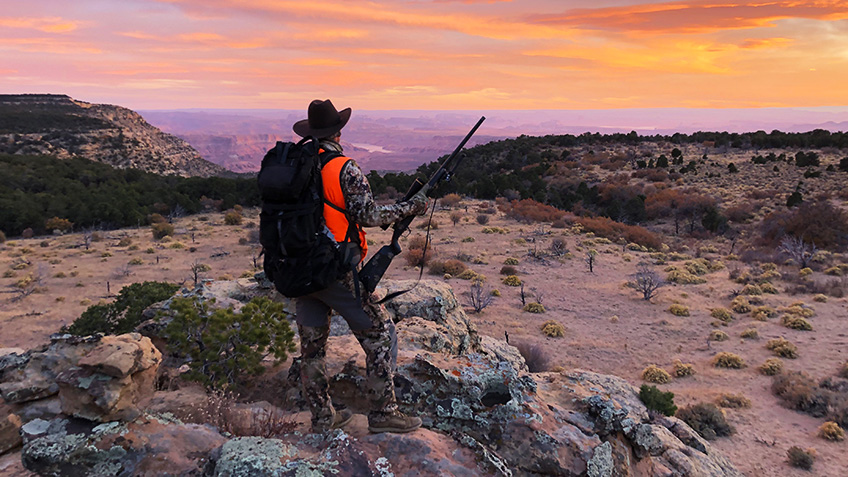
Conclusion
The best protection against the dangers of the backcountry is prevention. Keep a clear head, use common sense, be aware of the weather, the wildlife and your surroundings, and don’t hurry with your knife. You’ll have an awesome time in the wilderness, and emerge with more spring in your step and more fire in your eyes.
Want to read more from Aram von Benedikt? Check out the following articles:
• DIY Backcountry Hunting Tactics and Gear
• How to Be an Ethical Long-Range Hunter
• Tips and Tactics for Hunting Coues Deer
• Essential Stalking and Still-Hunting Skills
• A Beginner's Guide to Traditional Bowhunting
• 6.5 Creedmoor Proven: How Does It Actually Perform on Big Game?
• How Hunting Rifles & Gear Have Evolved Over the Last 50 Years
• How to Sharpen a Knife
• How to Set Up Your Rifle and Scope for Long-Range Dialing
• 7 Common Predator Hunting Mistakes to Avoid
• 6 Tips for Hunting Public-Land Mule Deer
• 10 Tips for Bowhunting Elk
• Tips and Tactics for Bowhunting Mule Deer
• How Do You Build the Ultimate Western Big-Game Rifle?
• 10 Ways to Prep for Your Next Western Big-Game Hunt
• Tips and Tactics for Hunting Canyon-Country Gobblers
• 12 Tips for Shed Hunting the West


































